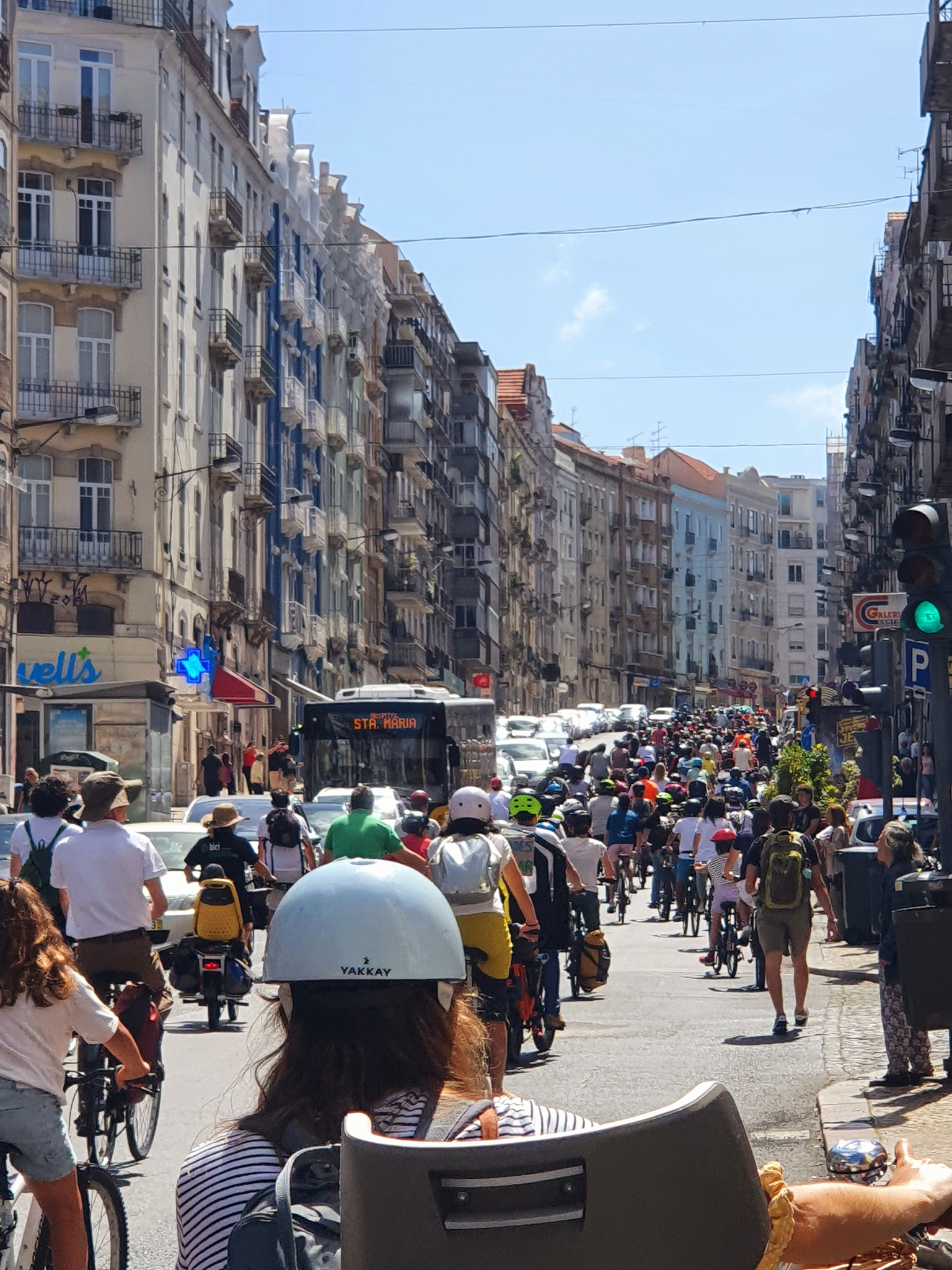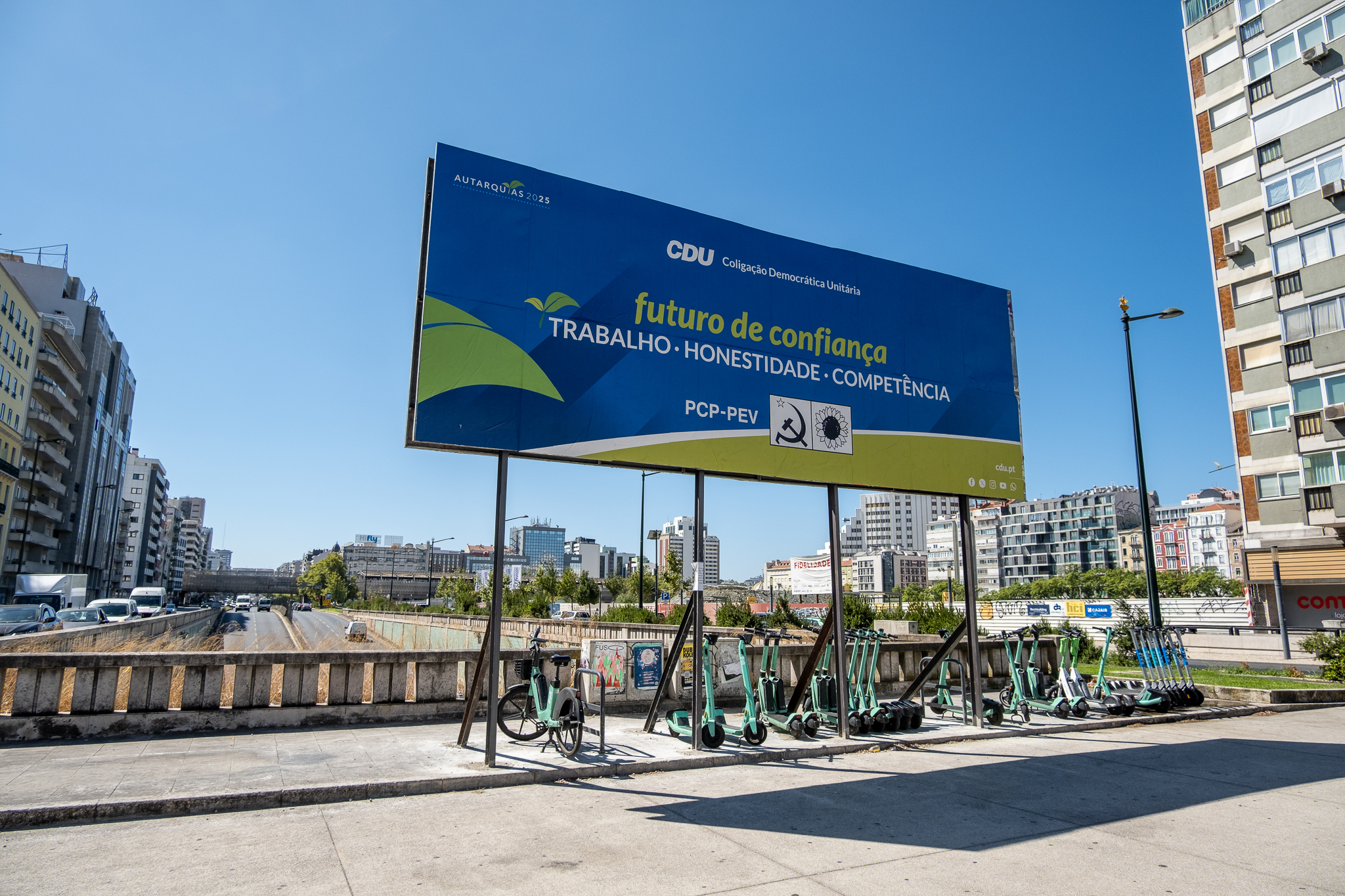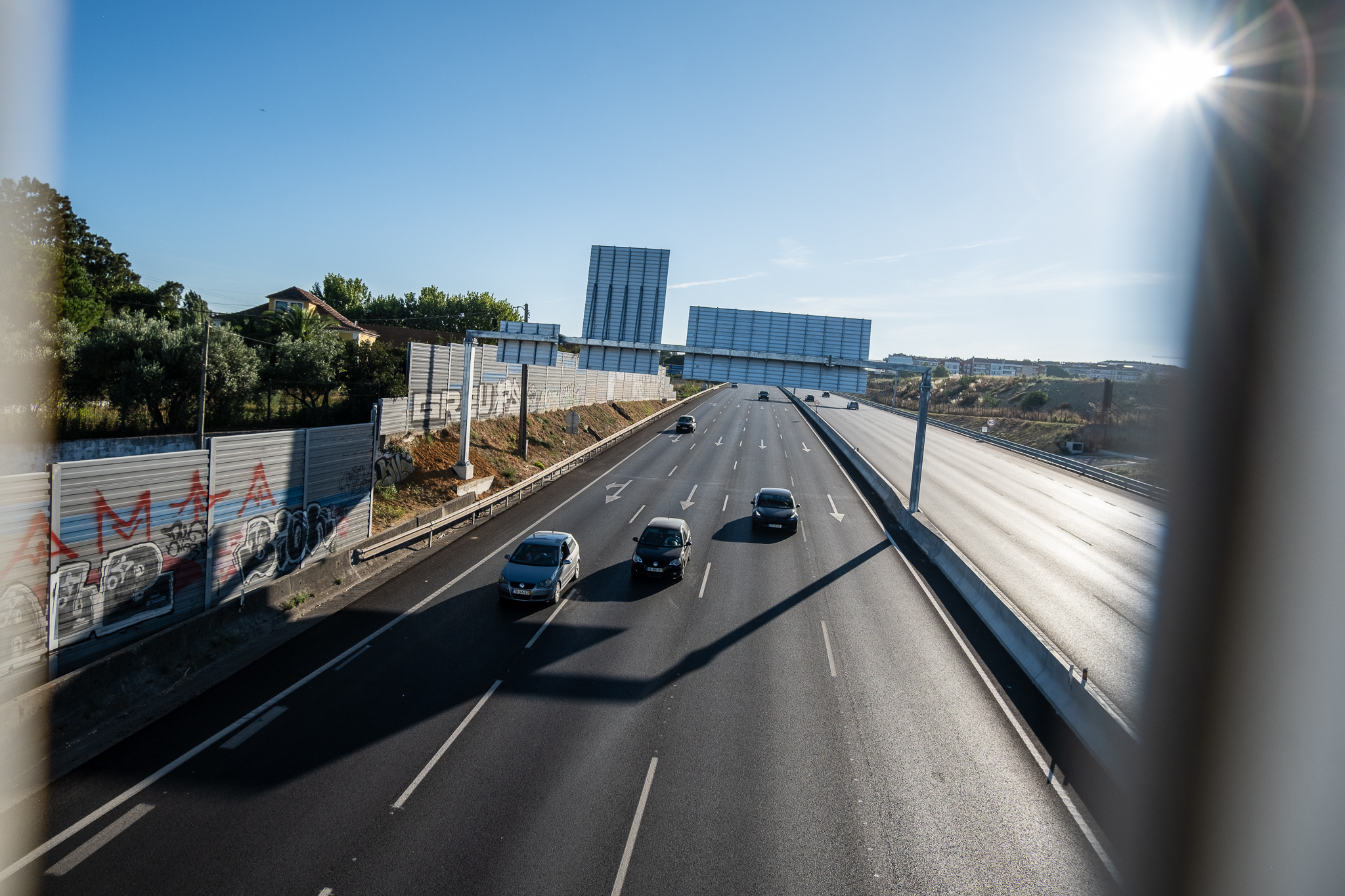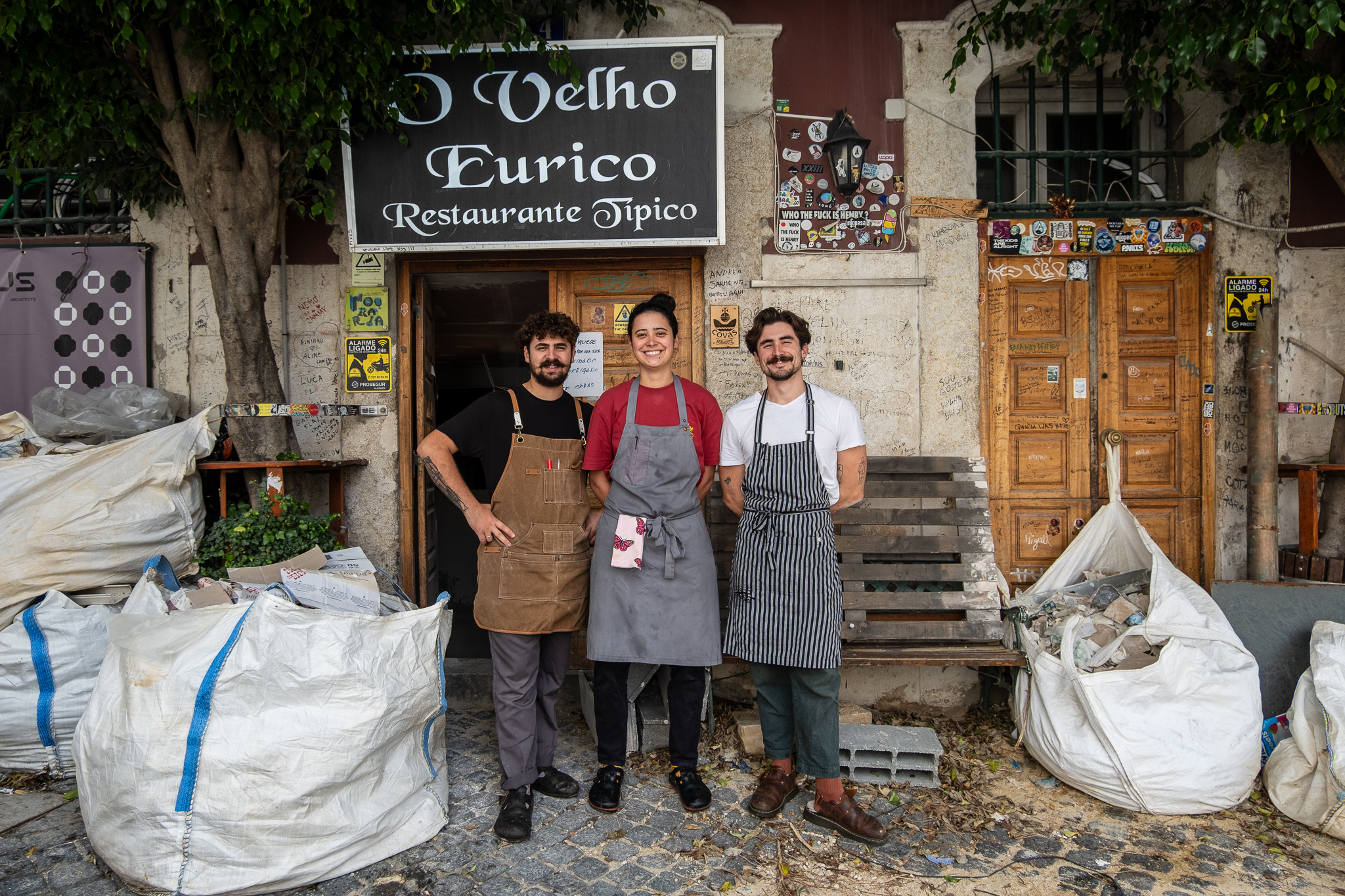In February, a group of neighbors from Penha de França held an assembly to discuss active mobility in the parish. From this first meeting several ideas emerged, and now a collective was born to give them shape and continuity, MAPEAR.

Moved by the lack of conditions for walking and cycling, as well as the lack of green spaces and public transportation in the various areas of Penha de França, in Lisbon, a group of residents of the parish came together to create the collective MAPEAR - Assembly for Active Mobility and Public Space in Penha de França.
These residents - currently around 80 people connected to the collective - want to constructively move forward with ideas, debates and proposals for a more friendly Penha de França for those who circulate by foot, bicycle and public transport, with more and better public spaces. In this sense, they have organized themselves into in-person assemblies, like the one we reported on in Februaryand participated in public actions.

For example, MAPEAR participated in the The last decentralized meeting of the Lisbon City Council, held on April 12th about the parish of Penha de FrançaMAPEAR had the opportunity to question the President Carlos Moedas and the Councilman for Mobility, Filipe Anacoreta Correia, about the mobility plans, cycling network, road safety and public space for Penha. MAPEAR has scheduled a private meeting with the City Council and has already met with the Parish Council.
Meanwhile, last Saturday, May 7, the collective joined the Kidical Massin Lisbon, which had a route through several streets of the parish, especially Morais Soares Street and General Roçadas Avenue. On that same day, another assembly of the collective took place to collect ideas for the next joint actions.
Introducing himself to the city, the The MAPEAR collective has released a manifesto (which you can read at the end of the article) where it exposes some of its ideasThe company proposes measures in four fundamental areas: investing in infrastructures and equipment for active mobility; creating conditions for a safe active mobility; rethinking the public space and circulation; and reducing the asymmetries in the parish and in its connection to the city. Among these measures, MAPEAR suggests:
- materialize the expansion plan for the bicycle paths planned for the parish;
- Create more secure bike parking on streets and in EMEL parks;
- implement GIRA stations at strategic locations connecting major axes;
- encourage traffic calming and implement strategic speed reduction measures, especially near schools and residential areas;
- educate the population about mobility;
- promoting Bicycle Trains in the parish schools;
- create more green spaces and make an urban park in Vale de Santo António;
- Tree the streets and make the public space more inclusive;
- Occasionally closing streets to traffic and boosting local commerce;
- set a goal of 10% for bicycle use in the parish;
- promote the complementarity of active mobility with public transport;
- ensure a more equitable distribution of forms of travel other than the individual car;
- Reinforce public transportation to and from the parish.

The collective says that Penha de França "remains disconnected from the rest of the city in terms of mobility infrastructure, active or public transport"although it is "one of the most densely populated parishes" of Lisbon. To MAPEAR, "Penha de França lacks simple solutions to encourage bicycling and walking"and the parish must "take advantage of its centrality, population density and spacious circulation axes to be a successful example of active mobility adoption". This group of residents indicates that, "likewise, investing in better public transport and more green spaces is essential, because the high population density requires it, and because the existence of quality public space and more green areas of enjoyment is vital in terms of health, well-being and inclusion".
The MAPEAR collective talks through a mailing list restricted access. If you live in Penha or spend time in Penha (in commerce, studying, visiting friends, etc), you can join by sending an e-mail to mobilidadenapenha@gmail.com.
Manifesto | MAPEAR
For an active mobility and better public space in Penha de França.
Penha de França is integrated in the historic center of the city of Lisbon, being one of the most densely populated parishes. However, it remains disconnected from the rest of the city in terms of mobility infrastructures, whether active or in public transport. This is also the parish with the second worst average ratio of green spaces per inhabitant, with a value of less than 1 m2. The public space, with large road crossings, makes it difficult for people to circulate safely, for example, when children are going to school or for people with reduced mobility.
Knowing that 37% of the trips in the historic center area are made within the area itself, our parish lacks simple solutions to promote cycling and walking, as well as to ensure the safety of those who already choose active modes in their daily lives. For example, the ratio of bicycle parking spaces is currently only 7 spaces per 1000 inhabitants. More people cycling and walking reduces the pressure of car parking and the difficulties currently experienced in the smooth and fast movement of public transport.
The recently approved Lisbon Climate Action Plan 2030 foresees the establishment of low carbon emission zones and advances targets of 33% of travel in active modes, of which 10% by bicycle (a figure that reached 0.6% in 2017), in line with the National Strategy for Cycling Active Mobility (ENMAC) 2020-2030 and the National Strategy for Pedestrian Active Mobility (ENMAP) 2030, which aims at the same 10% of bicycle travel. Furthermore, CML's application to the European program "Missão Cidades" explicitly foresees "reinforcing the investment in the expansion of the structuring and accessible pedestrian network, of the cycling network with continuous and uninterrupted connections to all the city's parishes and to the bordering municipalities, to all the city's educational establishments, neighborhood equipment and other travel-generating poles". Let's remember that in Lisbon, 69% of the trips take place within a distance of less than 5 km, and a third of these trips are made by car. If the right conditions were created, an important part of these trips could be made on foot, by bicycle or by public transport, with obvious benefits for health, public space and the environment.
The parish of Penha de França should therefore take advantage of its centrality, population density and spacious circulation axes to be an example of success in the adoption of active mobility. A recent study indicates that the lower presence and access to bike lanes and the GIRA shared bike system, as in Penha, reflects and aggravates social and territorial inequalities in the city of Lisbon. In CML and EMEL plans there are already several bike lanes and GIRA stations planned for the parish, and its implementation is crucial to achieve the required goals for active mobility. Given the high number of small trips that take place within the parish and the municipality, the potential is high if there are conditions for walking and cycling and also secure parking for bicycles. Likewise, investing in better public transport and more green spaces is fundamental, because the high population density demands it, and because the existence of quality public space and more green areas of fruition are vital in terms of health, well-being and inclusion.
It is in this sense that we propose a set of concrete measures, some achievable in the short term, to put Penha de França in the path of the rest of the city in terms of meeting targets and planned projects, and, above all, to ensure a parish with better quality of life for all people.
- Invest in infrastructure and equipment for active mobility:
- General Roçadas, Av. Mouzinho de Albuquerque, Av. Afonso III, ensuring the connection of the parish with the riverfront and with already installed cycling axes, such as Almirante Reis;
- Create secure parking spaces for bicycles in covered parks belonging to the Parish Council (Sapadores) or EMEL (R. Heróis de Quionga, future Silo of Alto S. João, others);
- Accomplish the introduction of the GIRA stations foreseen in EMEL's plan: Paiva Couceiro, Parada do Alto de S. João and Mercado de Sapadores;
- Create bicycle parks within 5 meters before crosswalks (where the Highway Code prevents the parking of cars), starting with the main roads of the parish (R. Morais Soares, Av. General Roçadas, Av. Mouzinho de Albuquerque, Av. Afonso III) and increasing the ratio of bicycle parking spaces.
- Create conditions for safe active mobility:
- Create traffic calming conditions, especially near schools, for children to move safely in the streets;
- Promote mobility education to the entire population, of all age groups;
- Promotion and dissemination of the Bike Train in the parish schools;
- Implement traffic calming measures, such as:
- Introduce continuous sidewalks at the entrances and exits of residential streets;
- Reduce speeding by implementing "30 Zones" and reducing the width of roadways;
- Introduce raised crosswalks on longer streets (do not force the pedestrian to walk more than 50 meters to a crosswalk);
- Introduce trees flanking the roadways, preferably between parking spaces.
- Rethinking public space and circulation:
- Create more gardens and green spaces:
- Create an urban park in the Vale de Santo António in the near future;
- Tree the streets;
- Install street furniture (benches) in order to make the public space more inclusive, of permanence and not of mere crossing;
- Promote the closure of streets to traffic:
- Close the Morais Soares Street to motorized circulation once a year, in order to promote active mobility and local commerce, organizing activities such as a picnic in the street or others that bring neighbors together and stimulate other ways of occupying public space;
- Set a goal of 10% for bicycle use in the parish and draw up a Climate Action Plan, similar to the municipal one, with respective monitoring measures.
- Reduction of asymmetries in the parish and its connection to the city:
- Promote the complementarity of active mobility with the use of public transport in the parish;
- Ensure a more equitable territorial distribution of all forms of travel that do not pass through the individual car, particularly with the strengthening of public transport (not only those that connect to other parishes, but also the circular, which ensure mobility within the parish) in daytime and nighttime.
We are people who live, work or frequently visit this parish located in the center of the city of Lisbon and with a privileged connection to the Tagus River. Bringing the parish closer to the rest of the city through the creation of conditions to improve travel by foot, bicycle and/or public transport is fundamental to reduce asymmetries within the parish and the municipality. Creating more green spaces and having better public spaces is a guarantee of health, quality of life, and environments suitable for the enjoyment and coexistence of people of all ages. We want a Penha de França where it is safe and pleasant to go from the river to the hill, on foot or by car.











